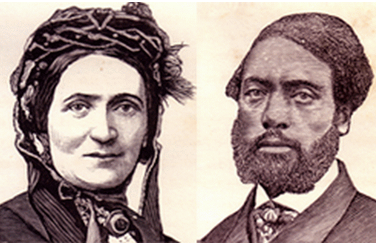Telling Our Story: An Underground Railroad Stop
Transported Back to the 1700s
Step into a living time capsule as you enter the Johnson House, a remarkable architectural treasure that has withstood the test of time since its construction in 1768. Standing as one of Germantown’s oldest year-round residences, this historic gem retains its authentic charm, virtually frozen in the past. The façade, adorned with dark stone meticulously cut and dressed, echoes the natural beauty of the surrounding area. The Dutch doors, original to the house, greet visitors just as they did centuries ago, while much of the woodwork, flooring, and glass have endured the centuries. A captivating journey through the house reveals domestic artifacts that once belonged to the Johnson family, weaving their stories into the very fabric of this remarkable historic site.
The Johnson House was lovingly crafted by John Johnson, son of Dutch immigrant Dirk Jansen, as a heartfelt wedding gift for his son John, Jr., and his bride Rachel Livezey. John Johnson, Jr., a tanner and farmer, also conducted his tannery business from the comforts of this home. Rooted in Quaker values, the Johnsons embraced principles of non-violence. This deeply held belief was put to the test during the tumultuous Battle of Germantown in October 1777, a dramatic chapter of the Revolutionary War. As the battle raged just beyond their front door, the family sought refuge in their cellar. Remarkably, even as soldiers entered their home to requisition food from their kitchen, the Johnson family’s unwavering commitment to non-violence held firm, leaving indelible scars from that fateful battle etched into the house’s very walls.
The Johnsons were not only custodians of this historic homestead but also stewards of a considerable expanse of land in Germantown. They held a place of prominence as one of the town’s most affluent families, their legacy extending beyond their residence. The Johnsons actively supported the Concord School, Germantown’s inaugural English-speaking educational institution. Samuel Johnson, John Johnson’s son, played a pivotal role as a member of the first school board and the town council in Germantown. The Concord School, another cherished historic site, stands proudly across the street from the Johnson House, its doors open to the public for guided tours by appointment only.
The Johnson House and the stories it carries in its timeworn walls offer a captivating glimpse into a bygone era, where family, principles, and community intertwined to shape the rich history of Germantown. Come, step back in time, and immerse yourself in the living history of this extraordinary place.
Unveiling the 1800s Legacy
In the early 1800s, a new chapter unfolded within the historic walls of the Johnson House. Samuel Johnson, who had inherited the legacy of this venerable homestead, embarked on a journey of his own when he married his beloved Jennett (Rowland) Johnson in 1805. In keeping with their Quaker values, Samuel and Jennett made a profound impact on their community and the fight against slavery by opening their home’s doors as a vital station on the Underground Railroad.
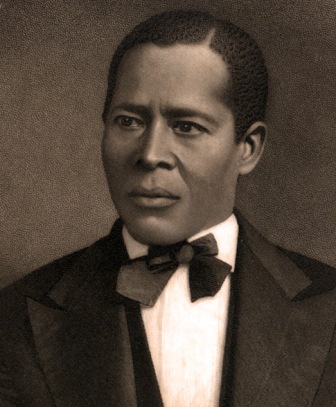
Within the sacred confines of the Johnson House, they provided refuge and hope to countless enslaved Africans seeking freedom. Their commitment extended far beyond mere shelter, encompassing the provision of sustenance, clothing, and even the means to continue their perilous journeys to liberty. It is through meticulous research that we have come to understand the significant role this house played in the Underground Railroad network, as it was a place where brave souls, including the esteemed abolitionist William Still, gathered for crucial “meetings” on the path to freedom. William Still, a free man and a towering figure in the abolitionist movement, was the esteemed Father of the Underground Railroad and also served as the secretary of the Philadelphia Antislavery Society.
Tradition whispers that another iconic figure in the struggle for freedom, Harriet Tubman, may have graced the Johnson House with her presence. While her visit remains unconfirmed, the house stands as a testament to the courage and dedication of individuals like Samuel and Jennett Johnson, who risked their safety and livelihoods to stand against the injustice of slavery. It was within these walls that the Underground Railroad’s clandestine web of support thrived, forever etching the Johnson House into the annals of American history as a beacon of hope and humanity.
A Century of Transformation and Recognition (1913-1997)
From 1913 to 1980, the Johnson House witnessed a remarkable journey of transformation and recognition. The Johnson family’s ownership came to a close in 1913, and there were concerns that this historic gem might face the wrecking ball. However, in a pivotal turn of events, the Woman’s Club of Germantown emerged as a savior, purchasing the house in 1917. While their intentions were noble, it’s essential to acknowledge that this organization was exclusively for white women, and membership was denied to Black women.
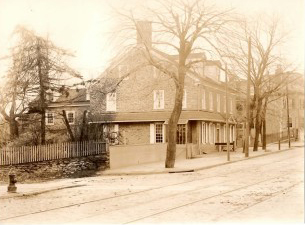
The Woman’s Club of Germantown, with a fervent commitment to community betterment, made the Johnson House its headquarters. They breathed new life into the historic residence by adorning it with exquisite antiques, elegant furniture, and fine china. In 1919, they expanded the site by constructing a spacious assembly hall directly behind the Johnson House, a space that now serves as the meeting place for the Germantown Mennonite Church. For six decades, the Woman’s Club of Germantown lovingly cared for the Johnson House, preserving its legacy.
The year 1980 marked a significant transition as the Woman’s Club disbanded, and they generously bequeathed the Johnson House, along with all its precious contents, to the Germantown Mennonite Historic Trust. This transition ensured the house’s continued operation as a living museum and safeguarded its historical significance for future generations.
In 1983, a transformative partnership emerged as Johnson House Historic Site joined forces with Cliveden of the National Trust to pioneer educational programs highlighting the crucial role of African Americans in Philadelphia’s history, thereby enriching the community’s understanding of its heritage.
In 1992, Delta Sigma Theta Sorority, a distinguished association of African American collegiate and professional women, recognized the Johnson House as “a site to be cherished for its significance to black history,” further solidifying its importance in preserving African American heritage.
The year 1995 brought a proud moment as the Pennsylvania Historical and Museum Commission dedicated a Pennsylvania Historic marker to the Johnson House on June 1st. This marker stands as a lasting tribute to the generations of Johnsons who tirelessly worked toward the abolition of slavery, honoring their enduring commitment to justice and freedom.
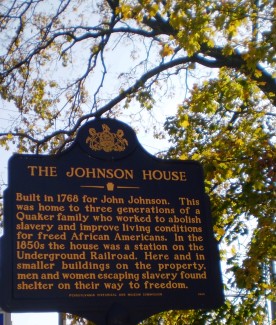
1997: A Milestone of National Recognition and Community Collaboration
In 1997, a pivotal year in the Johnson House’s storied history, the U.S. Department of the Interior, acting through the National Park Service, bestowed upon this venerable residence the prestigious title of National Historic Landmark. To commemorate this distinction, a historic marker was thoughtfully installed, forever acknowledging the house’s monumental significance.
As the Johnson House embarked on its new journey as a National Historic Landmark, the torch of stewardship passed to the newly formed legal corporation, Johnson House Historic Site, Inc. This organization assumed the vital administrative responsibility for both the house and its meticulously maintained grounds. In this transition, the neighboring Cliveden of the National Trust extended a helping hand, providing invaluable guidance and mentorship.
This collaborative effort marked the dawn of a new era, opening doors to a broader coalition of preservationists, dedicated community members, and passionate advocates for multicultural tourism. Together, they embarked on a shared mission to ensure that the Johnson House’s stories, from its role in the abolition of slavery to its pivotal station on the Underground Railroad, would continue to resonate and inspire future generations. This union of efforts has allowed the Johnson House to thrive as a living testament to the enduring spirit of cooperation, preservation, and the pursuit of historical truth.
2002: A Defining Moment in Sole Ownership
In a momentous turn of events in 2002, the baton of sole ownership for the Johnson House passed into the capable hands of Johnson House Historic Site, Inc. On the significant date of October 19th, a moment etched in history, a deed of ownership was ceremoniously transferred from the Germantown Mennonite Church. This transaction marked the conclusion of a multi-year period of joint ownership of this cherished property.
With this transition, the Johnson House found itself on a new path, where its destiny and stewardship rested firmly within the capable grasp of Johnson House Historic Site, Inc. This shift in ownership was not just a legal transaction; it symbolized a commitment to preserving and sharing the rich heritage of this historic site for generations to come.
2005-2023: Preserving and Enhancing a National Treasure
In 2005, the Johnson House achieved an illustrious status as a “Highly Valued American Historic Site” bestowed by the National Park Service, a recognition that underscored its historical significance. This honor was further solidified when the site was awarded a prestigious Save America’s Treasures grant.
From 2005 to the present day, the Johnson House has been unwavering in its commitment to preserving its rich heritage. This journey of preservation and restoration has entailed a series of critical tasks, each meticulously executed to ensure the site’s longevity and historical integrity.
Among these pivotal accomplishments are:
Heritage Preservation Conservation Assessment (2005): A comprehensive assessment that laid the foundation for preservation efforts.
Phase I Archaeological Investigation & Resource Management Plan (2005): Delving into the historical layers beneath the site to better understand its past.
Engineering Report: Conditions Assessment of Mechanical/Electrical Systems (2006): Ensuring the integrity of the essential systems that keep the Johnson House functional.
Conservation Assessment Program Survey (2006): A holistic survey aimed at conserving the site’s invaluable treasures.
Preservation Project – Professional Mobilization #1 (2006-2008): A significant endeavor that encompassed roof replacement, structural stabilization, and the meticulous restoration of dormer windows, preserving the site’s architectural heritage.
Johnson House Historic Site Preservation Plan (2007-2010): A strategic blueprint for preserving the site’s historical significance and enhancing its educational mission.
Deed of Façade and Open Space Easement (2009): An important legal commitment to preserving the Johnson House’s external appearance and open spaces.
Preservation Project – Professional Mobilization #2 (2013-2016): A continuation of the preservation journey, involving the restoration of windows and doors, masonry pointing, interior structural repairs, and measures to mitigate moisture intrusion and water diversion.
Throughout these years, the Johnson House’s tireless dedication to its preservation mission has not only maintained its physical structure but also enriched its ability to share the stories of the past with present and future generations. As it stands today, the Johnson House is a testament to the power of preservation and the enduring legacy of those who fought for justice and freedom within its historic walls.
Honoring the Indomitable Spirit of Philadelphia’s Women
In the tapestry of Philadelphia’s history, the roles played by women in both the anti-slavery and suffragist movements emerge as profound and enduring. Their relentless dedication to aiding enslaved Africans in their quest for freedom and access to education proved pivotal in the battle against enslavement. Remarkably, these women served as conduits for cultural, economic, and social assimilation, not only for the enslaved but also for themselves, as neither freed Blacks nor women held civil or legal rights at the time.
The pursuit of freedom, justice, and civil rights served as the unifying force that gave rise to transformative organizations like the Philadelphia Female Anti-Slavery Society. This collaborative spirit, fostering partnerships between Black and White women, was essential to the realization of tangible results in both movements. Every action undertaken in support of these noble causes was deemed significant, and African American women, despite their challenging circumstances, contributed their unwavering dedication and resources to the shared mission.
As we delve into this rich history, we find that the contributions of these resilient women reverberate through time, echoing the spirit of unity and determination that defined an era. In the words of Cornelia Swinson, Executive Director of the Johnson House Historic Site, the impact of these remarkable women transcends generations.
Click here to explore the profound influence of the Johnson Family and their steadfast allies on the women’s suffrage movement, a testament to the enduring legacy of those who stood for justice, freedom, and the empowerment of women.
Shaping Our Future Together: Community Visioning Session
The leadership of the Johnson House Historic Site has been ignited by a profound desire to embark on a transformative journey. This journey entails the reimagining and revision of our vision, mission, and statement of purpose, with a paramount focus on fostering an even deeper connection with our vibrant community.
Our vision is to become more than a historic site; we aspire to be a living, breathing testament to the enduring spirit of our community. As we embark on this collaborative effort, our foremost goal is to enrich the quality of life for our cherished residents and thriving businesses. We firmly believe that by strengthening our community ties, we can create a brighter and more prosperous future for all.
In this endeavor, we are dedicated to preserving the rich historical and cultural tapestry that defines the Johnson House. It is our unwavering commitment to ensure that the stories of the past continue to inspire, educate, and unite us in the present and for generations to come.
Join us on this remarkable journey of community engagement and envisioning, where your insights, aspirations, and dreams will shape the path we tread together. Together, we can weave a tapestry of shared history, culture, and community that stands as a beacon for all to admire and celebrate.
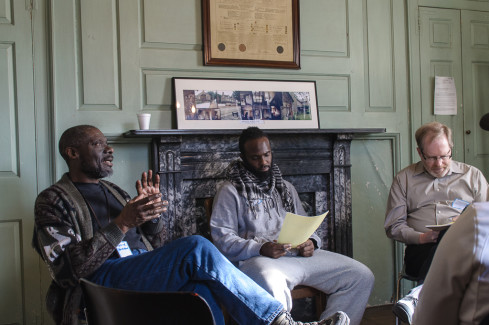
Our recent Community Visioning Session at the Johnson House brought together a diverse group of 14 participants from surrounding communities. This intergenerational and inclusive dialogue focused on answering a fundamental question: “What does the Johnson House want to be?” The participants, representing various socio-economic backgrounds, races, ethnicities, and genders, contributed their insights and experiences to shape our collective vision for the future. This session marked a significant step in our journey to define the Johnson House’s role as a catalyst for positive change and unity in our community.
